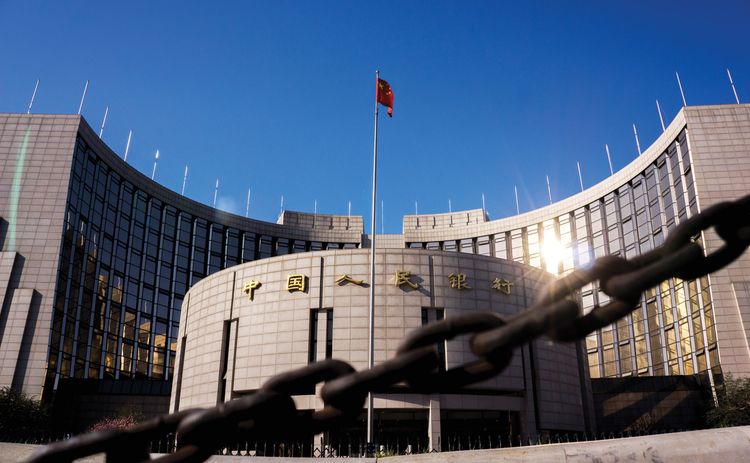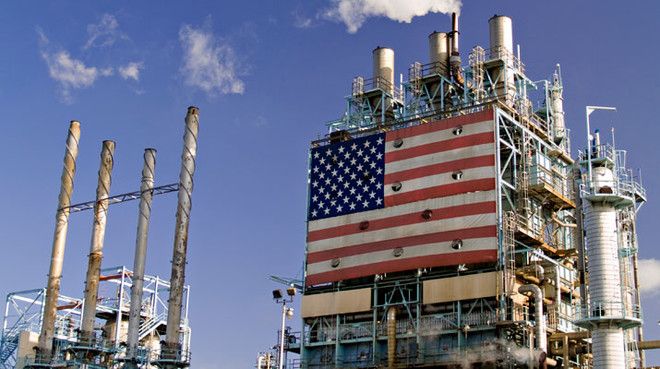In the ever-evolving global economic landscape, the complex and multifaceted trade tensions between the United States and China have captured the attention of investors, policymakers, and economists worldwide. This in-depth article examines the origins, developments, and current status of these trade disputes, while also analyzing their extensive implications on financial markets, global supply chains, and economic policies. By investigating this subject from historical, political, and economic perspectives, we illuminate how these trade conflicts continue to reshape international commerce and influence market sentiments, business strategies, and geopolitical alliances. As the two largest economies contend with issues such as tariffs, regulatory hurdles, and divergent policy agendas, the resulting uncertainties are not only affecting bilateral trade but are rippling across global markets, altering investment flows and economic stability in regions far beyond the US and China. In this comprehensive analysis, we will explore the historical background of US-China trade relations, dissect the economic ramifications of escalating tensions, assess the consequent market volatility, and finally consider the strategic responses from governments and private enterprises. Additionally, we will discuss the potential future pathways and scenarios that may arise as these disputes evolve and inform policy decisions worldwide.
Historically, the economic interplay between the United States and China has been marked by phases of collaboration and competition. After China’s emergence as a major global economic power in the late twentieth century, its integration into global supply chains became a critical component of worldwide manufacturing and trade. The United States, benefiting from cost-efficient production and access to a vast consumer market, saw China as an indispensable partner. However, as China’s economic influence grew rapidly, strategic rivalries soon emerged. Trade imbalances, intellectual property rights issues, market access restrictions, and concerns over state-subsidized industries contributed to a shift in the bilateral relationship, laying the groundwork for the trade tensions that now frequently make headlines. Over the past decade, a series of tariff impositions and policy adjustments have acted as catalysts, intensifying friction and causing ripple effects that resonate through multiple layers of the global economic system.
The economic ramifications of these tensions have been vast and multifaceted, influencing a variety of sectors in intricate ways. One of the primary concerns is the impact on consumer prices and supply chain stability. Tariffs imposed by either side have forced companies to rethink sourcing strategies and, in many instances, pass on increased costs to consumers. Businesses that have long relied on the robust, interlinked network of US-China trade have had to explore alternative markets or reconfigure production lines, sometimes leading to significant operational disruptions. Furthermore, these measures have contributed to broader market uncertainty, making investors wary of the potential for further escalations. For instance, during periods of heightened tension, stock indices in both countries have experienced volatility as investors adjust their portfolios in anticipation of policy shifts. Some sectors, such as technology and agriculture, have been disproportionately affected, highlighting the uneven distribution of impact across industries.
The influence of US-China trade tensions extends far beyond the immediate bilateral relationship; it has a profound effect on global supply chains and multinational business models. Supply chains that span continents have often been optimized for efficiency and cost-effectiveness under a regime of predictable trade policies. With the advent of trade disputes, companies are forced to recalibrate, sometimes relocating manufacturing hubs or diversifying suppliers. This strategic reorganization is neither instantaneous nor free from cost, leading to disruptions that can impede economic growth and complicate investment decisions worldwide. In recent developments, many corporations have intensified their focus on resilience by building flexible supply chains that can better withstand geopolitical shocks. The resulting shift toward a more multipolar trade environment highlights the need for adaptive strategies in the face of unpredictable international policies.
Market volatility is another significant consequence of the ongoing tensions. Financial markets are highly sensitive to geopolitical developments, and the unpredictability stemming from US-China disputes has fostered an environment of caution among investors. When tensions escalate, market participants often reallocate capital in search of safe-haven assets, such as government bonds or precious metals, which tends to result in sharp fluctuations in asset prices. Moreover, uncertainty over future trade policies, regulatory regimes, and diplomatic interactions contributes to longer-term shifts in market behavior. Researchers and market analysts frequently note that stock market sectors directly reliant on international trade are among the first to react to such tensions, leading to an environment where market signals sometimes serve as early warnings of economic slowdowns or recessions.
Political dynamics play a crucial role in shaping these trade tensions, with domestic politics in both countries interweaving with economic policies to create complex scenarios. In the United States, the debates over trade deficits and the loss of manufacturing jobs have given political momentum to protectionist sentiments that, in turn, influence policy decisions. In China, government policies are often driven by broader aims of maintaining social stability and advancing technological self-reliance. As both countries continue to pursue domestic agendas through the lens of economic nationalism, the likelihood of future disputes remains high. This interplay of politics and economics has forced international observers to reexamine assumptions about globalization and the mutual interdependence that historically underpinned economic growth. The search for strategic balance has thus become a central narrative in global economics, with every policy modification potentially triggering a new phase in the long-running saga of US-China relations.
The ramifications of these tensions are not limited solely to high-profile sectors but also filter down to everyday economic life. Consumers in both nations may find themselves paying higher prices for everyday goods, as companies attempt to absorb or transfer the additional costs of tariffs and regulatory compliance. Small and medium-sized enterprises (SMEs), which form the backbone of many economies, face heightened challenges in an environment characterized by rapid policy changes and shifting market access. For such businesses, the uncertainty created by trade disputes not only complicates strategic planning but also creates obstacles in securing credit and investment. The cumulative effect of these disruptions can dampen overall economic growth and reduce the pace of technological innovation, as companies hold back on research and development investments amid heightened risks.
As the trade tensions evolve, several key trends and strategic responses are emerging from both the private and public sectors. One notable trend is the accelerated diversification of supply chains. Companies are increasingly adopting multi-tiered strategies to reduce reliance on any single country, seeking alternatives that offer comparable cost benefits and quality standards. In practice, this means establishing new production centers in regions such as Southeast Asia, Eastern Europe, and Latin America. This diversification is not just a short-term tactical maneuver but part of a broader reorganization aimed at enhancing long-term resilience. In response, governments in these regions are actively courting foreign investment, offering incentives to attract companies looking to mitigate the risks associated with concentrated supply chains.
Additionally, a number of strategic responses can be categorized as follows:
A. Economic Diversification: Businesses are exploring new markets and investment opportunities to reduce exposure to geopolitical risks, thereby smoothing out potential disruptions from any one trade partner.
B. Technological Investment: Firms are enhancing their technological capabilities to boost efficiency and offset rising production costs due to tariffs, including investments in automation and digital supply chain management.
C. Strategic Alliances: Collaborations across borders are gaining prominence as companies seek partnerships that help navigate the shifting regulatory environment, thereby fostering a collective approach to overcoming trade barriers.
D. Policy Adaptation: Both governments and businesses are engaging in policy dialogue to find balanced solutions, such as negotiating trade agreements that can stabilize certain sectors while allowing for flexibility in others.
Government responses to these tensions are diverse and reflect varying domestic priorities and political pressures. For example, some administrations have opted for aggressive tariffs and trade barriers with the objective of protecting domestic industries and curbing what they see as unfair practices by their foreign counterparts. In contrast, others have favored diplomatic negotiations and multilateral engagements aimed at reducing conflict and promoting cooperation. These divergent strategies reflect broader ideological splits on the best approach to safeguarding national economic interests without triggering retaliatory measures that could lead to an all-out trade war. The interplay between these contrasting approaches has further complicated the global economic environment, as nations around the world weigh in with their own policies and adjustments.
Recent policy announcements and strategic reviews underscore a global shift towards bolstering domestic economic capabilities. Many countries are now reevaluating their dependency on external markets, urging domestic production and innovative technological investments as a buffer against international uncertainties. This recalibration of strategies is seen in initiatives such as the reshoring of manufacturing facilities in traditionally developed countries and the targeted subsidies provided by emerging economies looking to enhance self-sufficiency. These initiatives, coupled with ongoing trade disputes, suggest that the era of hyper-globalization may be transitioning into a more regionally balanced system. In this new paradigm, countries may pursue blended strategies that balance openness with protective measures to ensure economic stability and safeguard against unexpected shocks in the international market.

The broader financial market continues to be influenced by these trade tensions through investor sentiment and capital allocation patterns. Periods of heightened conflict have been associated with a flight to safety, leading to sudden surges in the prices of traditionally stable assets like US Treasury bonds and gold. Conversely, when indications of potential de-escalation appear on the horizon, riskier assets may see a rebound as market confidence is restored. This cyclical pattern of asset reallocation not only highlights the impact of geopolitical events on financial markets but also serves as an indicator of broader economic health. Experts have noted that while short-term market responses to trade tensions may be drastic, the long-term effects tend to be more measured, as businesses and investors gradually adapt to new realities.
The role of international institutions also comes under scrutiny in the context of these tensions. Organizations such as the World Trade Organization (WTO) and the International Monetary Fund (IMF) are challenged to mediate between conflicting interests and foster an environment where disputes can be resolved through dialogue rather than unilateral actions. Although these institutions have occasionally provided platforms for arbitration, their effectiveness is often limited by the strategic interests of their member states. In light of these limitations, there is a growing call for reform or the establishment of new frameworks that can better manage conflicts in today’s interconnected economic landscape. Efforts to update multilateral trade agreements and establish new standards for digital trade, intellectual property, and environmental considerations are currently underway, reflecting a broader trend towards modernization in global economic governance.
The technological dimension of the trade tensions adds another layer of complexity. The competition between the United States and China for technological supremacy—particularly in areas such as 5G networks, artificial intelligence, and semiconductor production—has contributed significantly to the friction between the two powers. These technological disputes often extend into debates over national security, intellectual property rights, and global standards, with far-reaching implications for innovation and competitiveness. As tech companies navigate these turbulent waters, many are compelled to reexamine their supply chains, investment priorities, and research initiatives. The need for robust cybersecurity measures, coupled with a strategic emphasis on digital resilience, is now central to the operational strategies of multinational corporations. The competitive landscape is further complicated by the fact that technological advancements can quickly shift the balance of power; a breakthrough in any key area may tilt the scales in favor of one side, thereby altering the dynamics of international trade and political power structures.
Furthermore, geopolitical alliances and strategic partnerships are increasingly being reshaped by the ongoing trade tensions. Countries that have traditionally remained neutral are finding themselves compelled to take sides or at least articulate positions that reflect their national interests in an environment marked by bipolar competition. These alliances are often driven by a need to secure access to advanced technologies, safeguard strategic resources, or simply avoid becoming collateral damage in a high-stakes economic contest. In many instances, regional trade agreements are being revisited and renegotiated, demonstrating that existing alliances must be dynamic and responsive to the shifting currents of international politics. This realignment of global partnerships underscores the far-reaching implications of trade tensions, highlighting how deeply economic issues can intertwine with matters of national security and diplomatic strategy.
Amid these uncertainties, businesses and policymakers are tasked with balancing risk management with the pursuit of growth opportunities. Investors are increasingly relying on sophisticated risk analysis models to gauge the potential fallout from various trade policy scenarios. In parallel, corporate leaders are investing in scenario planning and stress testing to prepare for a range of outcomes. These measures include diversifying investment portfolios, reengineering supply chains, and adopting flexible operational strategies that can adapt quickly to changing market conditions. Even in times of political gridlock or economic downturn, the resilience and adaptability of companies have proven to be critical factors in weathering market volatility. In this dynamic landscape, the ability to innovate and pivot swiftly may well determine the success or failure of enterprises on a global scale.
The future outlook of US-China trade tensions remains unpredictable yet crucially important. Key questions persist regarding the willingness of both nations to engage in meaningful dialogue and compromise versus the possibility that the current trajectory will intensify into a more prolonged and systematic decoupling of the two economies. The potential scenarios range from managed coexistence to outright economic bifurcation, each with distinct implications for global markets. Experts suggest that the resolution of these tensions will likely involve a blend of negotiated agreements, incremental policy adjustments, and strategic alliances with other global powers. For instance, emerging economies may play a vital role in mediating conflicts and providing alternative markets, thereby diffusing some of the pressure on both the US and China. In a rapidly shifting environment, the ability to adapt to unforeseen challenges—be they technological, political, or economic—will be paramount for the sustained prosperity of all stakeholders involved.

Looking forward, several strategic recommendations emerge for both policymakers and businesses seeking to navigate this challenging landscape successfully. First, an emphasis on multilateral engagement is essential. Rather than focusing solely on bilateral negotiations, the broader international community should work towards establishing comprehensive frameworks that address the multifaceted nature of modern trade. This could involve coordinated policies on tariffs, digital trade regulations, and environmental standards that benefit a wide range of countries. Second, fostering innovation and technological advancement remains critical. Investment in research and development, particularly in emerging fields like green technology and advanced manufacturing, can help countries and companies maintain a competitive edge even in an environment of heightened political tension. Third, a robust risk management strategy is indispensable for companies facing market volatility. By diversifying supply chains, investing in digital transformation, and maintaining agile operational frameworks, businesses can mitigate the adverse effects of sudden policy shifts and unforeseen market disruptions.
In summary, the trade tensions between the United States and China represent one of the most consequential economic challenges of our time. These conflicts are deeply embedded in a broader geopolitical contest that has reshaped not only the bilateral relationship between the two powers but also the global economic system at large. The cascading impacts on consumer prices, supply chain integrity, market volatility, and technological innovation are profound and require coordinated responses from multiple stakeholders. As nations and businesses adapt to an era defined by strategic uncertainty and rapid change, the key to thriving in this environment lies in flexibility, innovation, and a steadfast commitment to dialogue and cooperation. The ongoing journey toward a stable, mutually beneficial trade framework is fraught with challenges, yet it also presents opportunities for those willing to embrace change and lead with foresight.
Through understanding the historical contexts, analyzing current trends, and anticipating future developments, stakeholders can better position themselves to navigate the tumultuous waters of US-China trade relations. The interplay of politics, economics, and technology in this arena serves as a poignant reminder of the interconnected nature of today’s global society. As we look toward the future, the imperative for adaptive strategies and resilient economic structures has never been clearer. Balancing the pursuit of national interests with the demands of international cooperation may well determine the stability of markets and the success of the global economy in the years to come.






